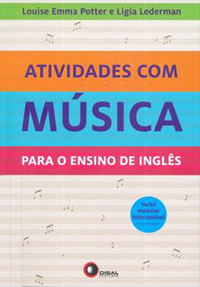By - Jane Godwin Coury*

When I was 18 years old, I studied German at A-level, a British educational qualification students need to get into university. In the first week, our teacher showed us a set text that we´d need to read as part of the syllabus. It was called Doktor Murkes gesammeltes Schweigen (Murke's Collected Silences). I clearly remember feeling butterflies in my stomach as I didn´t understand the title in German. I thought that reading this short story would be a very steep mountain to climb and that perhaps I wouldn´t make it.
There were five people in my German class including me. We were actually all in the same boat as our level of German was similar. I can tell you that by the end of the year, we were all paddling in the same direction due to the support we gave each other and our teacher´s skills of conducting the exercises well. Thirty odd years later my German is poor, however I can still remember some key words from the story, such as Angstfrühstück (panic-breakfast) and Paternosteraufzug (Paternoster lift). In the story, Murke, who works in a Cultural Department at Broadcasting House, begins his days with a "panic-breakfast" by riding the lift to the empty space at the top for a brief dose of terror that it might become stuck. As a class, we had interesting discussions in German about the characters, plot and cultural innuendos.
Short stories are a wonderful way to get language students engaged and also serve as a springboard to raise cultural awareness. Longer texts may seem daunting to learners at first, however “it´s not always the destination. It´s the journey”. The wonder is in the learning and the ups and downs on the way. Talking about fiction in class with people who have different points of view and backgrounds can be an enriching experience, and interaction is key to language development. Learners have the opportunity to learn new vocabulary, understand it in context and put it to use by talking and writing about what they have read.
Drawing nearer towards the top of the mountain can be fulfilling for language learners as they not only see their goal in sight, but also look back to see how far they have come. I remember in my second year of my German course, the teacher announced that we would read “The Lost Honour of Katharina Blum” by the same author. I still had butterflies, but this time they were fluttering ripples of excitement and anticipation of getting one step further towards my goal.
If you are interested in short stories, I have included some websites where you can find resources below.
And here is a free e-book of short stories I wrote called Four Short Stories to Use in the ELT Classroom: https://rb.gy/xuocs4. You can find this book and “Help! Preciso de Atividades para minhas Aulas” (short stories with exercises, co-authored with Silvana Dibo) at my blog: www.janeeltblog.com.br.
*Jane Godwin Coury is from the UK and has been working in ELT since 1987. She holds an MA in Applied Linguistics and TESOL. She is author of Exercícios para Falar Melhor em Inglês, Four Short Stories to Use in the ELT Classroom and co-author of Help! Preciso de Atividades para minhas Aulas. Jane has vast experience in teaching English, teacher education, copyediting and translating. She currently teaches postgraduate courses in Teaching English and Translation at Cult Estácio.
LIVRO RECOMENDADO
